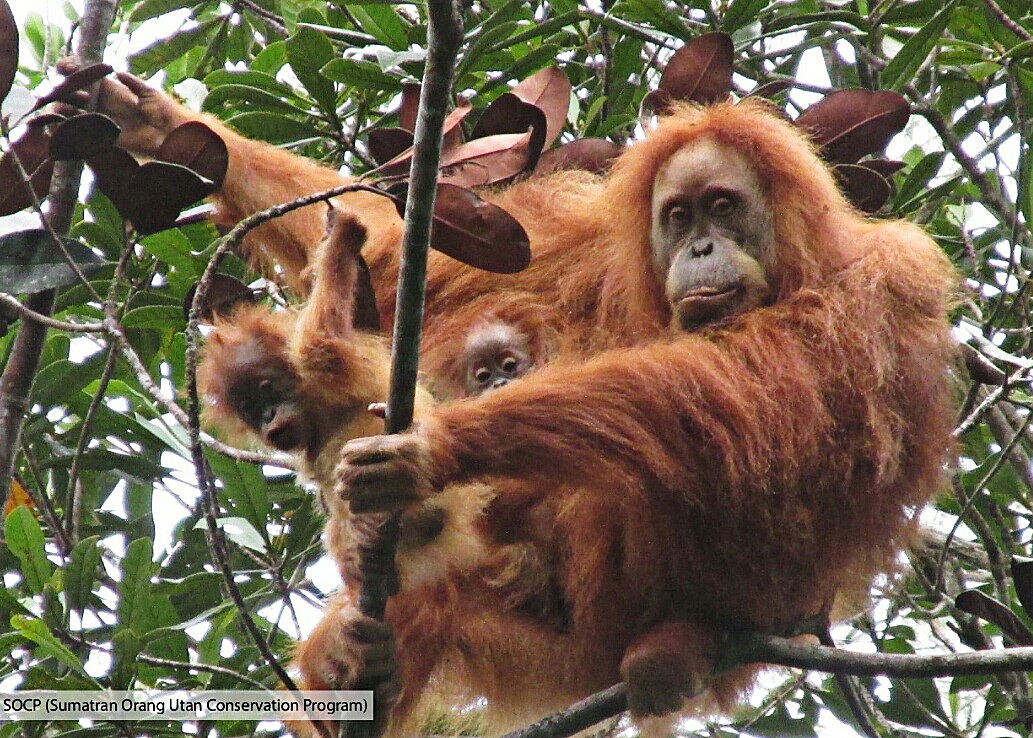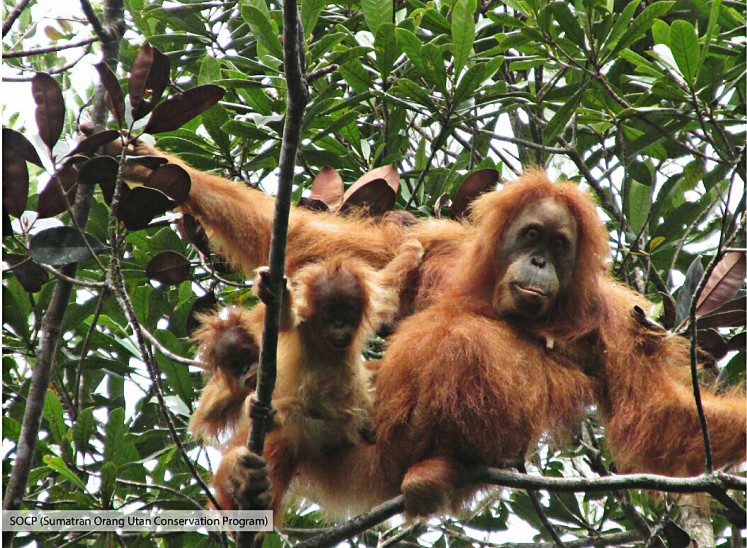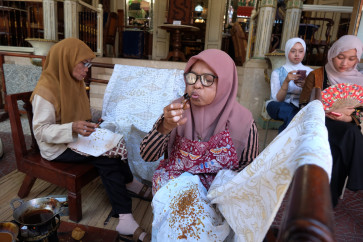Popular Reads
Top Results
Can't find what you're looking for?
View all search resultsPopular Reads
Top Results
Can't find what you're looking for?
View all search resultsSighting of Tapanuli orangutan twins raises hope for saving species
Change text size
Gift Premium Articles
to Anyone
 In the wild: A Tapanuli orangutan with her twin babies was spotted in May in a tree in Batang Toru forest in Tapanuli, North Sumatra, by members of the Sumatran Orangutan Conservation Program (SOCP). The newly identified orangutan species, 'Pongo tapanuliensis', is on the International Union for Conservation of Nature's (IUCN) list of critically endangered species. (Courtesy of the Sumatran Orangutan Conservation Program/File)
In the wild: A Tapanuli orangutan with her twin babies was spotted in May in a tree in Batang Toru forest in Tapanuli, North Sumatra, by members of the Sumatran Orangutan Conservation Program (SOCP). The newly identified orangutan species, 'Pongo tapanuliensis', is on the International Union for Conservation of Nature's (IUCN) list of critically endangered species. (Courtesy of the Sumatran Orangutan Conservation Program/File)
T
wo wildlife conservationists spotted a Tapanuli orangutan with her twin babies in Batang Toru forest in Tapanuli, North Sumatra,raising hopes for saving the critically endangered species.
The three Tapanuli orangutans were spotted in May in a tree at a height of around 15 meters in the early afternoon.
The staff members of the Sumatran Orangutan Conservation Program (SOCP), Andayani Oerta G. and Ulil Amri Silitonga, who are both based at the Batang Toru forest observation post, were on their regular patrol round when they spotted the orangutan family.
“The babies looked identical, although one seemed quite bold while the other was very shy and stayed close to the mother,” recalled Andayani.She added that the female orangutan remained in the tree for about an hour before she left the area, the twins clinging to her.
Rare sighting: Twin babies of the critically endangered Tapanuli orangutan species hang onto their mother in a tree in Batang Toru forest, North Sumatra. According to the Sumatran Orangutan Conservation Program (SOCP), twin births generally happen in captivity and rarely in the wild. (Courtesy of the Sumatran Orangutan Conservation Program/File)SOCP biological diversity monitoring head Matius Nowak said he once documented twin orangutans in the wild, but they were not Tapanuli orangutans.
“Twin births happen among animals bred in captivity. In the wild, it’s very rare for both babies to survive,” Nowak said in a statement on Wednesday.
The Tapanuli orangutan, which is distinguished by their smaller head and frizzier cinnamon-red hair, was identified as a distinct species in 2017 and was immediately listed as a critically endangered species by the International Union for Conservation of Nature (IUCN).
Around 800 Tapanuli orangutans currently live in Batang Toru, but the IUCN has estimated that at the current rate of deforestation, the population would drop to just 275 by 2060. (nor/ebf)










